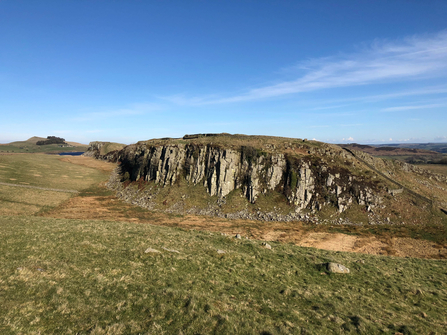
The Whin Sill - one of five rocks looking for votes. Image by Ian Jackson.

The Whin Sill - one of five rocks looking for votes. Image by Ian Jackson.
Literally the bedrock of the world’s heritage, economy and tourism, rocks have lots to tell scientists about things that are happening to landscapes as the world’s climate continues to change.
Following on from Northumberland Wildlife Trust’s 50th Anniversary Rock Festival and subsequent best-selling book aptly titled Northumberland Rocks, the wildlife charity, together with its partners: The Natural History Society of Northumbria, Visit Northumberland, Northumberland & Newcastle Society and North Eastern Geological Society, has decided to keep the enthusiasm for geology going by launching the first online public vote to find the county rock and fossil for Northumberland.
For the whole of August, voters will have a shortlist of five great rocks and fossils to choose from:
For the rock, votes are open for:
For the fossil, votes are open for:
Visit: www.nwt.org.uk/rockandfossil to cast a vote.
Ian Jackson, geologist and trustee with Northumberland Wildlife Trust says:
“Rocks and fossils are a great way of getting people to enjoy and experience nature and the surrounding landscape. Ultimately, we believe that the more people really connect with nature, the more they’ll act to protect it.
“Most US States have a state rock and fossil but, to the best of our knowledge, no British county has done this, so Northumberland will be the first county to have them voted for by the public which is very exciting.
“The Northumberland Rocks book placed easily understandable information on a variety of county rocks and fossils on book shelves and inspired people to visit 50 special places across Northumberland, so I’m hoping this venture generates even more interest and debate.”
The vote will open on Tuesday 1st August and close on Thursday 31st August 2023 with the result being announced early September 2023.